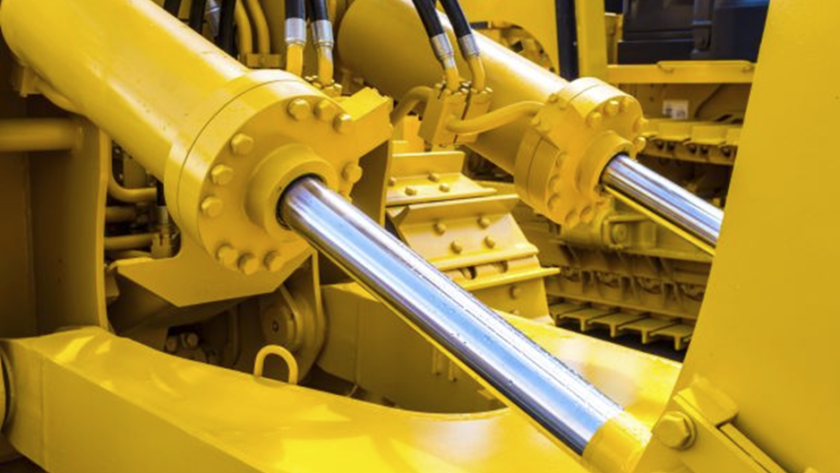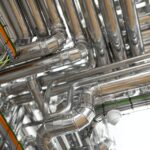The use of hydraulic technology is very common in the modern world. This is particularly true in the construction and manufacturing sectors, due to the ability of this type of machinery to continuously and efficiently produce the vast amounts of mechanical power required for industrial tasks.
This capability comes from components called actuators, which provide the motion and power that allow the machines to perform their work. If these hydraulic actuators are not properly installed or maintained, however, then the mechanical systems that depend on them will not operate at peak capacity.
In the following blog post, we’ll discuss strategies for optimizing actuator performance while reducing energy consumption in hydraulic equipment. By employing the techniques outlined below, you’ll be able to optimize hydraulic actuator efficiency and enhance the performance of the machinery your industry relies on.
Contents
Hydraulic Actuators: The Basics
The part of a machine that creates motion is referred to as an actuator, whether that motion is linear or rotational. There are many potential methods for generating the movement of these mechanical elements, with the most common being pneumatic, electric, or hydraulic. Electric actuators require an outlet or other source of electrical power, while pneumatic systems utilize compressed air to generate motion.
Hydraulic actuators are the most precise and powerful of the various methods of generating mechanical movement. They can produce vast amounts of mechanical energy thanks to their use of incompressible fluid (usually oil), which is pressurized using a pump. The operator controls the flow of the fluid, and therefore the motion of the actuator, by opening or closing a valve that increases or decreases the fluid pressure applied to the mechanical components. This, in turn, allows for extremely precise control over the operation being performed.
Selecting the Right Components
The first step in optimizing the efficiency of any hydraulic equipment is to ensure the correct components are being used. There are many different types of hydraulic actuators, and their various parts are not interchangeable. Elements that are the incorrect size or not properly rated for the purpose of the specific system may hamper the performance of the machinery.
To ensure you have the correct components, you should first know all the specs for your machine:
- What size is the equipment?
- What application will it be used for?
- What level of pressure should the pump be expected to provide?
- What is the flow rate of the fluid in the system?
- What temperatures will the machinery be subjected to?
You should answer all these questions before purchasing any new components for your hydraulic actuators.
To ensure the components being employed are perfect for their specific task, many machinery operators choose to have custom solutions made by companies that specialize in integration, like Aberdeen Dynamics. This is often the best way to meet all the requirements for a particular piece of equipment.
Minimize Pressure Losses
One of the biggest causes for reduced hydraulic actuator efficiency is a loss of fluid pressure. Hydraulic systems rely on Pascal’s Law to generate mechanical force, which states that the pressure applied to one area of an enclosed fluid is transmitted equally to every other area in the container. If, however, adequate pressure cannot be maintained, then the machinery will not be able to generate the mechanical energy required to perform at optimal capacity.
To minimize pressure loss within the system, it’s important for operators to perform regular maintenance on their equipment. The seals in the machinery should be checked frequently, especially as they can degrade when exposed to hydraulic fluids and environmental stresses. If any signs of a leak are detected, repairs must be made promptly to prevent wasting energy due to inefficient operation of the system.
Maintain Proper Fluid Conditions
The hydraulic fluid itself is also an important element of an efficient system. If foreign particles, water, or air bubbles are introduced into the oil used to generate hydraulic power, it can cause the oil to lose its ability to provide lubrication to the system. The added friction will then cause the machinery to produce waste heat, slow down its ability to create mechanical motion, and lead to unnecessary wear and tear.
Installing a filtration system in the hydraulic pump is an excellent way to prevent contaminants from being introduced. An appropriate filtration system is typically included or sold by the manufacturer of the machinery itself since it is such an important component of all hydraulic technologies. Without proper filtration, hydraulic oils may become contaminated and must then be replaced entirely.
Implement Control Systems
The correct control system for the machinery is another crucial element for an efficiently operating hydraulic actuator. The actuator itself is the part that generates the motion, but it is the control system that signals it to perform its work. Therefore, an inefficient control system will reduce the efficacy and longevity of even the most well-constructed machinery components.
Control systems differ depending on the type of hydraulic equipment being used, but their primary function is to provide operators with a way to interface with the machinery. They utilize valves, which may be electrical or mechanically operated, that, when opened, can direct the precise flow of fluid to allow for exacting movements to be made.
The control system may also provide signals to the hydraulic pump that creates the pressure. This is another way the movement of the actuator can achieve the precision that it does. Control systems often also contain sensors that can provide feedback to the operator, allowing them to keep track of how effectively the system is performing its work.
Follow the above recommendations to improve overall hydraulic actuator efficiency and longevity. By investing in high-quality components and regular maintenance, you will save money while also streamlining your operation.




